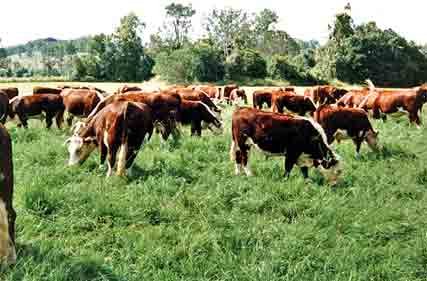 The Cattle Council of Australia is alerting producers to key changes in the transitional dates of on-farm biosecurity planning.
The Cattle Council of Australia is alerting producers to key changes in the transitional dates of on-farm biosecurity planning.
- New biosecurity laws have shifted many of the costs and responsibilities for managing pests and diseases on to producers.
- As part of this transition, producers are now responsible for implementing on-farm biosecurity plans.
- A biosecurity plan will be required for producers to gain or renew their Livestock Production Assurance (LPA) accreditation from 1st October 2017.
- In parallel, a new national biosecurity management approach to Johne’s Disease (JD) in cattle has been developed by Animal Health Australia (AHA) and the Cattle Council of Australia.
- The new approach to JD management in beef cattle has seen most states remove regulations.
- To assist cattle producers take responsibility for managing their on-farm risks, an important tool, called the Johne’s Beef Assurance Score (J-BAS), has been developed.
- An on-farm biosecurity plan is also required for J-BAS.
- The same on-farm planning template will be used for LPA and J-BAS, with producers who have a focus on JD being required to complete the optional questions on JD.
- The J-BAS system works on a set of scores measured off a producer’s previous exposure to JD and their preparedness in managing their risk. An outline of the score system can be found at: www.animalhealthaustralia.com.au/wp-content/uploads/2016/07/J-BAS_April-2017-2.pdf
- The Northern Territory (NT) and Western Australia (WA) have legislated minimum J-BAS entry requirements that include a biosecurity plan and, in the case of WA, herd testing.
- To maintain J-BAS 7, producers must have a biosecurity plan overseen and signed by a vet by 1st July 2017 and have undertaken a ‘check test’ (50 samples) with clear results by 1st July 2018, or they automatically move to a J-BAS 6.
- The default position for any producer will be J-BAS 6 unless they have prior JD infection in the last 5 years, in which case they should then self-assess as per the J-BAS criteria.
- Cattle travelling to Western Australia will need to be J-BAS 7 or 8, and meet other entry requirements as set out in the health certificate for movement of stock to Western Australia (LB1 form).
- Cattle travelling to the NT from 1 July 2017 will need to be J-BAS 6 and accompanied by a Cattle Health Declaration from the property of origin.There is no need for vet endorsement or testing. National Cattle Health Declaration form: http://www.farmbiosecurity.com.au/wp-content/uploads/2016/10/NATIONAL-CATTLE-HEALTH-DECLARATION_fillable_251016_FA.pdf
- It is recommended that for any cattle transaction within the production system, a National Cattle Health Declaration should be supplied by the vendor and requested by the buyer (cattle being sent direct to slaughter may not require this).
